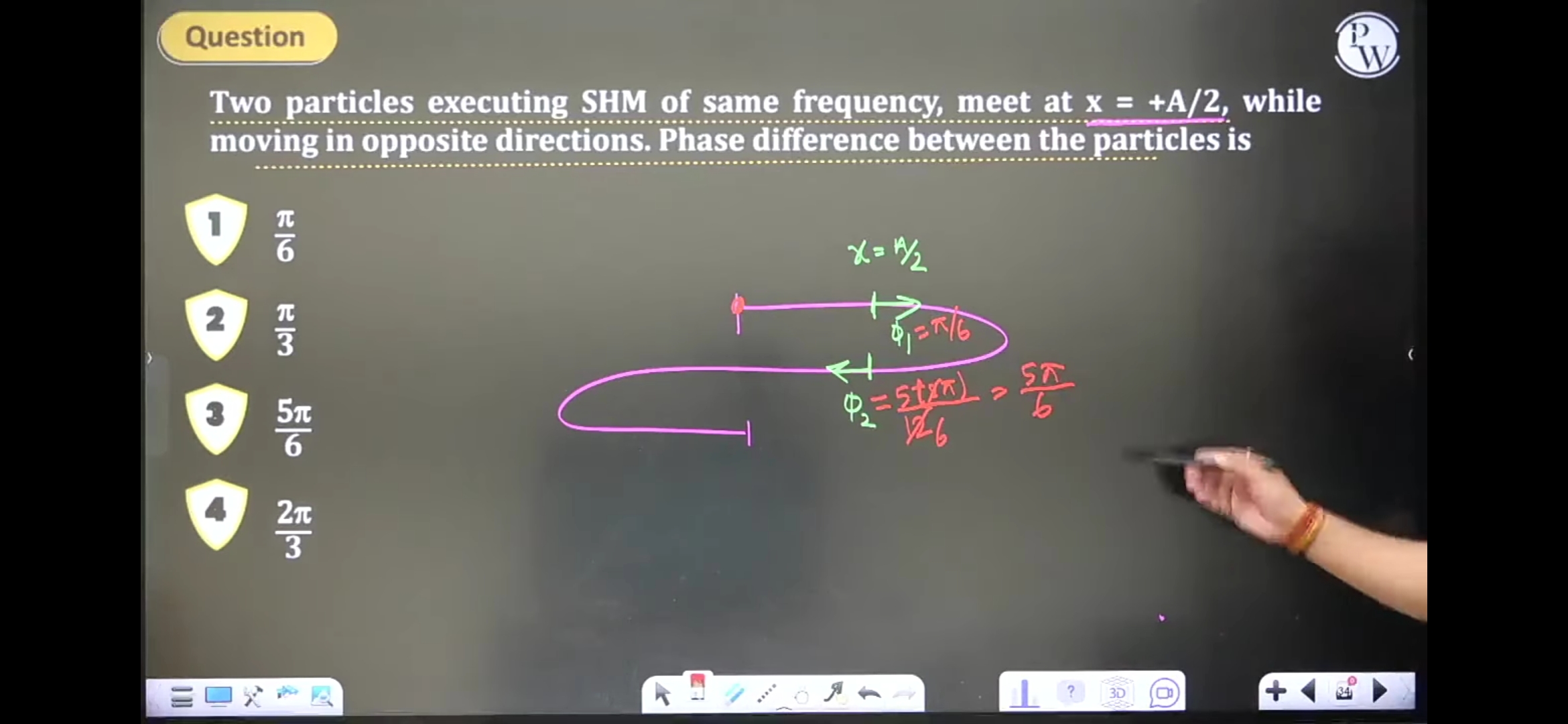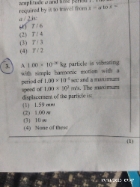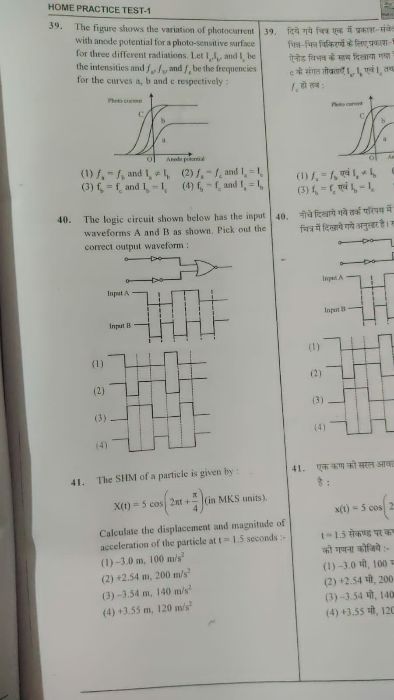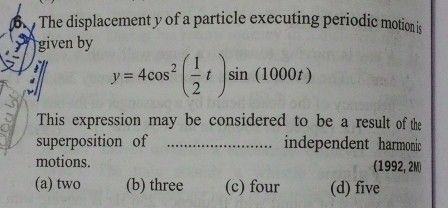NEET Class neet Answered
For linear simple harmonic motion with a given ω, two initial conditions are necessary
and sufficient to determine the motion completely. The initial conditions may be
(1) initial position and initial velocity or (2) amplitude and phast or (3) energy
and phase.
Asked by anurag04823 | 12 Jan, 2023, 11:48: PM
Displacement of linear simple harmonic motion is
 ....................................(1)
....................................(1)where x is displacement , A is amplitude of oscillation , ω is angular frequency and Φ is initial phase.
There are three parameters to describe the motion of SHM , i.e., Amplitude A , angular frequncy ω and
Initial phase Φ.
Since angular frequency ω is given , we need two equations to get other two parameters.
----------------------------
(1) initial position and initial velocity are known .
Initial position xo is obtained by substituting t = 0 in eqn.(1).
xo = A sin Φ ................................(2)
velocity of motion is determined by differentiating eqn.(1)
 ................................(3)
................................(3)Initial velocity vo is obtained by substituting t = 0 in eqn.(3).
vo = A ω cosΦ .....................................(4)
By dividing eqn.(2) by eqn.(4) , we get

Hence from above relation , we get initial phase Φ .
Then, using initial phase Φ , we get amplitude A either from eqn.(2) or eqn.(4) .
Hence by knowing Amplitude A and initial phase Φ , we can use eqn.(1) to get displacement as a function of time.
-----------------------------------------------------------------
(2) Amplitude and initial phase are known
By knowing Amplitude A and initial phase Φ , we can use eqn.(1) to get displacement as a function of time.
------------------------------------------------------------
(3) Total energy and initial phase are known
Total energy U = (1/2) k A2
where k =  is force constant and m is mass of particle that is undergoing SHM.
is force constant and m is mass of particle that is undergoing SHM.
 is force constant and m is mass of particle that is undergoing SHM.
is force constant and m is mass of particle that is undergoing SHM.From above expression, we get amplitude A from known mass m and known angular frequency ω .
By knowing Amplitude A and initial phase Φ , we can use eqn.(1) to get displacement as a function of time.
Answered by Thiyagarajan K | 13 Jan, 2023, 09:38: AM
NEET neet - Physics
Asked by parthasarkar9801 | 17 Nov, 2023, 07:47: AM
NEET neet - Physics
Asked by anurag04823 | 12 Jan, 2023, 11:48: PM
NEET neet - Physics
Asked by purvi16saini2004 | 16 Jul, 2022, 03:26: PM
NEET neet - Physics
Asked by chanchalchouhan571 | 16 Feb, 2022, 11:55: PM
NEET neet - Physics
Asked by ritibhrajvvrs3247 | 15 Sep, 2021, 10:27: PM
NEET neet - Physics
Asked by kiransahu515 | 25 Jul, 2021, 11:30: PM
NEET neet - Physics
Asked by natashakd8006 | 21 Mar, 2021, 09:43: PM
NEET neet - Physics
Asked by Prashant DIGHE | 02 Jun, 2020, 09:49: PM
NEET neet - Physics
Asked by ashutosharnold1998 | 13 May, 2020, 11:27: AM






